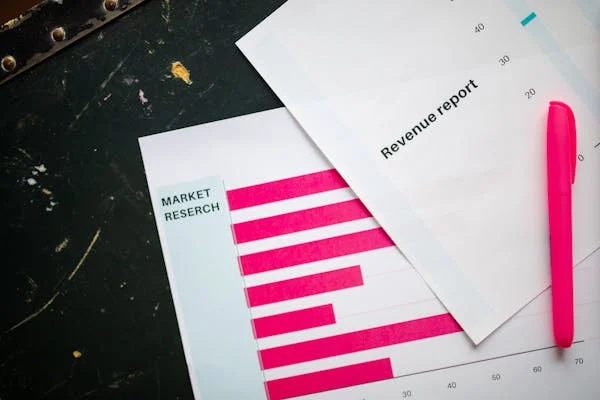Refund policies might seem like a backend detail, but for subscription businesses, they play a major role in customer retention. Subscribers today expect flexibility, transparency, and fairness. In this post, we break down 30 key stats and explore how each one can shape the way you structure your refund policies for better retention. Every section is built around one real-world stat, explained in-depth with practical takeaways to help you reduce churn.
1. 63% of subscribers say a flexible refund policy makes them more likely to stay subscribed
Why Flexibility Reduces Risk Perception
Customers don’t just buy products. They buy trust. And nothing builds trust faster than a policy that says, “We’ve got you covered.” A flexible refund policy signals that you care more about the long-term relationship than a single transaction.
When 63% of subscribers say flexibility helps them stay, they’re reacting to a psychological safety net. They feel like they can explore without being trapped.
How to Design Flexibility Without Losing Revenue
Flexibility doesn’t mean refunding everyone all the time. It means having:
- Clear terms that are easy to understand
- Conditions that favor the customer in edge cases
- Room for discretionary refunds in special situations
You can protect your revenue by making flexibility time-bound. For example, offering full refunds only within 14 days, and partial refunds up to 30 days.
You can also segment flexibility. High-value or long-term customers might receive extended refund windows, while new or one-time users might be held to stricter guidelines.
Action Steps
- Rewrite your refund policy in simple language.
- Add real-life examples to explain edge cases.
- Train support teams to offer goodwill refunds with guardrails.
- Let customers “pause” instead of cancel — it feels safer.
2. 29% of churned customers cite strict refund policies as a reason for cancellation
What Strict Policies Signal
Strict refund policies are often meant to protect businesses from abuse. But they also send a message: “We don’t trust you.” That message lands hard, especially if the customer is already frustrated.
Nearly one-third of churned customers point to rigid policies as the final straw. That’s a huge warning sign.
When Strictness Backfires
Rigid rules tend to hurt most when:
- The product fails to meet expectations
- There’s a misunderstanding about terms
- Customers are billed without noticing it
In these cases, a hard “no” from your support team can lead not only to churn but also to public complaints.
How to Be Firm Yet Fair
It’s okay to set limits — but balance them with human judgment. For instance:
- Allow a one-time refund exception per customer
- Review refund denial requests before finalizing
- Offer credits as alternatives to cash refunds
Adding context to your “no” helps too. Say: “Here’s why we can’t refund this time, but here’s what we can do…”
Action Steps
- Analyze all churn surveys for refund-related feedback.
- Map refund requests to churn timelines.
- Empower reps to override rules in specific edge cases.
- Track lifetime value impact of refunded users — many come back.
3. Companies with “no questions asked” refund policies report 18% lower churn on average
Why “No Questions Asked” Builds Loyalty
A no-questions-asked refund policy is more than just a policy—it’s a statement of confidence. It tells the customer, “We believe in our product so much, we don’t need an explanation if you want to leave.”
That kind of trust creates comfort. And comfort reduces churn. When customers know they can leave easily, they feel less urgency to do so.
It’s counterintuitive, but this openness often results in fewer actual refunds and more retained users.
When This Approach Works Best
This works especially well in these scenarios:
- During the first 7–30 days of a subscription
- When launching a new feature or pricing plan
- In competitive markets where trust differentiates you
A blanket policy for early-stage users lets them try risk-free. And most don’t abuse it—especially when they like what they’re getting.
Tactics for Making It Work
- Automate the refund process for first-time customers.
- Promote the policy clearly on the pricing and checkout pages.
- Track refund-to-retention ratios by cohort to refine your window.
- Offer feedback options without requiring them—keep it optional, not mandatory.
You can still collect data without forcing uncomfortable conversations. Add a one-click reason selection after the refund, not before.
Action Steps
- Test a 14-day no-questions-asked refund period.
- Analyze refund rates before and after the change.
- A/B test refund process friction points—make it smoother.
- Use refund data to improve onboarding and product clarity.
4. Subscription businesses that offer prorated refunds see a 22% increase in customer satisfaction
What Are Prorated Refunds?
A prorated refund gives the customer money back based on how much of the subscription they’ve used. For example, if they cancel halfway through the month, they get 50% back.
It feels fair. That’s the key.
Customers love when companies are thoughtful like this. And that sense of fairness shows up in satisfaction scores.
Why Satisfaction Matters for Churn
Happy customers don’t just stick around longer. They tell others. They re-subscribe. They complain less.
Even if they cancel today, a good refund experience can bring them back next year.
When to Offer Prorated Refunds
This works best when:
- You offer annual plans (a full year upfront)
- You serve B2B clients with unpredictable usage
- You provide software, streaming, or subscription boxes
Avoid prorated refunds in trials—free users haven’t yet paid anything, so proration doesn’t apply.
But for paid subscriptions, it’s a classy move.
Tactical Implementation Tips
- Automate prorated calculations in your billing system.
- Communicate the refund logic clearly in your cancellation page.
- Offer an option: refund or switch to credit.
- Use proration as a win-back tactic: “We refunded $40, but here’s $50 in credit if you stay.”
That kind of message turns a refund into an upsell opportunity.
Action Steps
- Enable proration on mid-cycle cancellations.
- Announce it in your onboarding emails to build trust early.
- Measure support ticket sentiment pre- and post-implementation.
- Highlight fairness in your policy page—it’s a differentiator.
5. 40% of consumers check refund policy before committing to a subscription
Why Your Policy Page is a Sales Page
This stat flips the script. Most companies think of refund pages as defensive content. But 40% of potential buyers are reading it as part of their decision-making process.
That means your refund policy isn’t a legal formality—it’s a trust signal.
What Consumers Look For
They’re asking:
- Is this company fair?
- What happens if I change my mind?
- Are there hidden penalties?
If your refund policy feels vague or hostile, many buyers will leave before even trying your product.
How to Write a Policy That Converts
- Keep it short—under 400 words is ideal.
- Use clear section headers for each scenario: trials, renewals, annual plans, partial refunds.
- Use plain language—avoid legalese.
- Add a FAQ at the bottom that handles tricky cases.
You want the reader to say, “Okay, this makes sense. They seem reasonable.”
Use Visual Design to Increase Clarity
- Use bullet points for key rules
- Highlight time limits clearly (e.g., “within 14 days”)
- Include an example: “If you cancel on day 20 of a 30-day cycle, we’ll refund 10 days”
It removes doubt and builds confidence.
Action Steps
- Treat your refund policy page as a core part of your conversion funnel.
- Include it in your pricing and checkout links.
- Add it to onboarding flows so users don’t get surprised later.
- Track heatmaps—see where people drop off or hesitate.
6. Offering a 30-day refund window reduces churn by up to 16% in consumer SaaS
The Magic of 30 Days
Thirty days is long enough to build a habit—but short enough to still feel like a trial. That’s why it’s the sweet spot for consumer SaaS.
When users have this safety window, they explore more. They take chances. They’re not scared of making a mistake.
That positive start leads to better activation, which leads to lower churn.
Why 30 Is Better Than 7
Seven-day trials feel rushed. Users may forget they even signed up.
Thirty days allows for:
- Full onboarding
- Feature discovery
- Real usage across billing cycles
Plus, it gives support teams time to intervene and recover accounts that are about to cancel.
The Refund Window as a Churn Buffer
A 30-day window also catches edge cases:
- Accidental sign-ups
- Billing errors
- Forgotten renewals
You can win these users back with a smooth refund flow or even an upgrade offer.
Action Steps
- Extend your refund policy to 30 days and monitor churn changes.
- Automate nudges on day 7, 14, and 21 to check satisfaction.
- Offer training or chat support during the window to improve onboarding.
- At day 28, offer an incentive to stay (e.g., “Stick with us and get 10% off your next month”).
7. B2B SaaS companies with money-back guarantees have 11% higher annual retention rates
Why Guarantees Work in B2B
In the B2B world, budgets are tight. Risk matters. Decision-makers are nervous about wasting money—or worse, choosing the wrong vendor.
A money-back guarantee changes that. It tells the buyer, “We’re confident this will work. And if it doesn’t, you won’t pay for it.”
That confidence transfers to the customer. It reassures procurement, legal, and finance teams. It shortens the sales cycle.
Retention Starts Before Onboarding
The moment someone feels confident in your value, they’re less likely to churn. A guarantee gets them to that feeling faster.
It also sets a tone of partnership. You’re not just selling software—you’re standing behind it.
Guarantee Mechanics That Work
- Limit it to the first 60 or 90 days.
- Require proof of use—not results, just genuine effort.
- Offer optional onboarding to make success more likely.
- Publicize your success rate: “98% of our clients never ask for a refund.”
Action Steps
- Add a guarantee badge to your pricing page.
- Include the guarantee in sales decks and legal terms.
- Train your onboarding team to mention it proactively.
- Track the correlation between guarantee awareness and retention rate.
8. 1 in 4 subscription cancellations are reversed after offering a refund-based incentive
Why Refund-Based Incentives Work
When a customer hits the cancel button, it doesn’t always mean they’re lost. Sometimes, they’re just unsure. A refund-based incentive gives them a moment to pause and reconsider.
Whether it’s a partial refund, account credit, or bonus month, it shifts the mindset from “I’m leaving” to “Maybe I’ll give it one more try.”
That’s why 25% of cancellations can be reversed this way—it buys you a second chance.
Timing Is Everything
The best time to offer a refund-based incentive is:
- Immediately after cancellation is initiated
- During the final step of the cancellation flow
- After a refund has already been approved (as a surprise bonus if they stay)
These moments have emotional weight. Leverage that by showing care and offering flexibility.
What to Offer
Keep your incentives simple:
- A refund of the current month if they agree to try another one
- A 25–50% refund on an annual plan if they pause instead of cancel
- Store credit for future services
Use refund framing that feels generous, not desperate. For example: “We’d love to make it right—how about we refund this month and help you get more value next?”
Action Steps
- Build a “rescue” flow in your cancellation process with refund incentives.
- A/B test incentives (credit vs cash vs discount).
- Track recovery rates and calculate LTV of saved users.
- Create templates for support agents to personalize incentive offers quickly.
9. Transparent refund policies correlate with 14% higher Net Promoter Scores
The Link Between Transparency and Trust
Transparency removes fear. When your refund policy is easy to find, easy to read, and clearly stated, it tells your customers, “We value fairness.”
That translates into higher Net Promoter Scores (NPS), which are directly tied to referral behavior and brand trust.
A 14% increase in NPS can mean more word-of-mouth, better online reviews, and longer retention.
What Transparent Actually Means
Being transparent isn’t just about publishing your policy—it’s about making it:
- Easy to find (linked in menus, footers, pricing pages)
- Simple to understand (no legal jargon)
- Clear in expectations (how refunds work, time limits, exclusions)
Use real examples: “If you cancel after 10 days into a 30-day billing cycle, we’ll refund the remaining 20 days.”
Transparency also means acknowledging limits. If you don’t offer refunds in certain cases, say so—honestly and respectfully.
Action Steps
- Rewrite your refund policy in plain language.
- Include a link in your product dashboard and email footer.
- Measure NPS and correlate it with refund policy awareness.
- Train your support team to quote policy wording exactly—no confusion.
10. 31% of churned users said a clearer refund process might have convinced them to stay
Why Process Clarity Matters
The process of getting a refund shouldn’t feel like a battle. But too often, it does.
When 31% of churned users say a better process would’ve changed their minds, it shows how emotional the experience is. Confusing steps, unclear timelines, or no communication can push users over the edge.
What a Good Refund Process Looks Like
A strong refund process includes:
- A clear button or link to request a refund
- Transparent eligibility messaging
- Real-time or automated updates
- A respectful tone throughout the interaction
Even if the refund is denied, a smooth process can maintain goodwill. It keeps the door open for return.
Action Steps
- Map out your current refund steps—where are the friction points?
- Add status updates (“Your refund is processing—usually 3–5 days”).
- Offer a self-service refund option for common cases.
- Collect feedback after every refund—what was unclear?
11. Companies with tiered refund options report 20% fewer customer disputes
What Are Tiered Refunds?
Tiered refunds give different options based on time, usage, or plan type. For example:
- 100% refund within 7 days
- 50% refund after 14 days
- No refund after 30 days
This structure gives customers choices—and choices reduce friction.
It also reduces disputes, because expectations are managed early and clearly.
Why Tiering Works
Not all customers are the same. Some expect flexibility. Others want predictability. Tiered refunds let you meet both without overcommitting.
For example:
- New users get generous options.
- Power users with longer engagement see scaled refunds.
- Enterprise accounts follow customized contracts.
It’s predictable for your finance team. Fair to the customer. And easier to enforce without drama.
Action Steps
- Create a simple refund tier chart and publish it.
- Train agents to explain it like a menu: “You’re at the 50% tier right now—would you like to proceed?”
- Add it to cancellation flows as a friction-reducer.
- Use dispute volume tracking to validate impact.
12. Streaming services offering refunds after billing errors reduce involuntary churn by 12%
The Problem With Billing Errors
Sometimes customers churn not because they’re unhappy—but because a billing glitch pushed them away.
Maybe they forgot to update a card. Or didn’t realize they’d been charged again. If your only response is “Sorry, too late,” they’ll walk.
Refunding those billing mistakes shows goodwill. And that goodwill results in a 12% reduction in involuntary churn.
Why This Is Especially Important for Streaming
Streaming subscriptions are often “set and forget.” Many users don’t notice auto-renewals. They’ll churn just to avoid the fight if something feels unfair.
Offering quick refunds for billing hiccups builds loyalty—especially if the user hasn’t used the product much that cycle.
Tactical Moves
- Detect dormant accounts before renewal—warn them before billing.
- Automate refund offers for renewals under 48 hours with no usage.
- Proactively email users about refunds before they request them.
Customers remember these touches.
Action Steps
- Audit billing dispute tickets—categorize by root cause.
- Set refund triggers for specific billing edge cases.
- Add a 1-click “I didn’t mean to renew” flow.
- Train support to act fast—refunds under 12 hours feel 2x more generous.
13. Digital product providers with a “refund and pause” option reduce churn by 9%
Why “Pause” Is a Powerful Alternative
Sometimes a customer doesn’t want to cancel forever—they just need a break. Maybe they’re busy. Or short on cash. Or not using the product right now.
Giving them a “pause” option at the refund step says: “You don’t have to leave. Just take a breather.”
When companies combine this with a refund for the current month, churn drops noticeably—by 9%.
How This Works in Practice
Instead of offering only two options—stay or cancel—you present three:
- Keep subscription active
- Cancel and refund
- Pause for 1–3 months
Pausing keeps users in your ecosystem. You don’t lose their data, and they don’t feel like they’re burning a bridge. That softens the churn experience—and often reverses it.
Messaging Matters
Use language like:
- “Want to take a break instead? We’ll pause your plan and save your settings.”
- “Need a refund? You got it. But would a pause help more?”
This gives the customer agency. And that sense of choice reduces frustration.

Action Steps
- Add a pause option on the cancellation page.
- Combine it with partial refunds to ease exits.
- Create reactivation emails with simple one-click resumes.
- Analyze return rates for paused vs fully canceled users.
14. Businesses with automated refund workflows see 15% lower time-to-resolution and 10% lower churn
Why Speed Is Everything
Refunds that take days—or worse, weeks—can cause frustration. Customers start wondering if they’ve been ignored or cheated.
But when your refund system is automated, things move fast. Refunds are approved, processed, and confirmed without delay.
That quick resolution makes a huge difference. Faster refunds = calmer customers = fewer cancellations.
Where Automation Helps Most
- Self-service refund request forms
- Instant eligibility checks (e.g., refund within 14 days)
- Email or SMS confirmations when refunds are issued
- Auto-refunds for failed charges or duplicate billing
It’s not just about saving your support team time—it’s about protecting the user experience.
Making Automation Feel Human
Even when automated, the tone matters. Include short friendly messages:
- “We’ve processed your refund—it should reach your account in 2–3 days.”
- “Thanks for giving us a try. We hope to serve you again soon.”
Automation isn’t cold when done right—it’s efficient and kind.
Action Steps
- Map every refund step from request to completion.
- Identify points of delay and build automation triggers.
- Use tools like Stripe, Chargebee, or Recurly to set up instant logic.
- Monitor support tickets for refund complaints—these should drop.
15. 36% of high-LTV customers consider refund responsiveness part of brand trust
The Link Between Refund Handling and Loyalty
High-LTV customers—those who spend the most and stay the longest—tend to be the most loyal. But they also expect more. Especially when something goes wrong.
Over one-third say how fast and fairly refunds are handled directly affects how much they trust the brand.
That means a slow or rigid refund response can damage more than the current interaction—it can threaten long-term value.
Where This Shows Up Most
- Premium subscriptions or enterprise plans
- Long-term customers requesting their first refund
- Clients facing technical issues or double billing
These are not refund abusers. They’re power users. And how you treat them during a stressful moment matters.
Refunds as a Trust Test
A refund isn’t just a transaction—it’s a test of your brand’s character. Are you fair? Fast? Thoughtful?
Get this right, and your best customers will respect you more. Get it wrong, and they might quietly start looking for alternatives.
Action Steps
- Flag high-LTV accounts in your CRM.
- Prioritize their refund requests with special attention.
- Give support teams authority to approve without escalation.
- Track post-refund retention—many top users bounce back stronger.
16. Churn is 2.5x higher among users denied refunds after accidental renewals
Accidental Renewals: A Silent Churn Driver
Auto-renewals are common in subscriptions. But when users forget to cancel or miss the billing alert, frustration builds fast.
And if they ask for a refund and you say no? You’ve likely lost them for good.
Denying refunds for accidental renewals causes churn to spike 2.5x compared to refunded users.
What Customers Expect
They want:
- A fair chance to fix the error
- A fast and easy refund process
- Respectful communication
Most aren’t trying to game the system—they just didn’t realize they were being charged again.
Turning It Around
When someone complains about an unwanted renewal, don’t lecture them. Offer empathy and a solution. For example:
- “No worries! We’ve refunded this cycle. You’re all set.”
- “Happens all the time—we’ve got your back.”
This small act keeps doors open. And often wins you a fan.
Action Steps
- Allow one refund per user per year for renewals.
- Detect low-usage accounts and notify them pre-renewal.
- Use plain language in billing emails: “Renewing tomorrow—click here to skip.”
- Track churn among denied refund users—it’s likely higher than you think.
17. Refunds issued within 24 hours result in a 27% higher win-back success rate
Speed Wins Loyalty
When a customer requests a refund, they’re often frustrated. The faster you resolve that tension, the more likely they are to return later.
Refunds handled within 24 hours show you’re responsive. You care. You’re efficient. That builds goodwill—even if the customer is leaving now.
And it makes them 27% more likely to return in the future.
Why Delays Hurt
Waiting on a refund feels like a penalty. It keeps users in limbo. That friction can harden their decision to churn—and worsen their memory of your brand.
Fast refunds, on the other hand, leave the door open.

How to Get to 24 Hours
- Set up refund automation for simple requests.
- Empower support to approve up to a limit (e.g., $200) without manager sign-off.
- Notify customers instantly when refunds are processed.
Even if the bank takes 3–5 days to post the funds, knowing it’s done provides peace of mind.
Action Steps
- Audit refund time-to-resolution data.
- Create internal SLAs: “Resolve within 24 hours, 90% of the time.”
- Use refund satisfaction surveys to track emotional impact.
- Follow up 30 days later with a special reactivation offer.
18. 44% of mobile app subscribers expect a refund option within the app experience
Why In-App Matters More Than Ever
Mobile users move fast. They expect everything—support, updates, billing—to happen inside the app. When something goes wrong, they’re not going to your website or help center. They’ll look in the app first.
If they don’t find a refund option there, they feel stuck. That frustration increases the likelihood of them leaving—and leaving bad reviews.
With 44% of mobile app subscribers expecting refund access directly in the app, this is now table stakes, not a nice-to-have.
The Psychology Behind It
The modern user expects control. The moment they feel trapped by a bad interface or a missing option, trust begins to erode.
Offering a visible, functional refund pathway inside your app immediately tells them: “You’re in charge.”
And that perception of control significantly lowers emotional churn triggers.
Ways to Implement In-App Refunds
- Add a “Manage Subscription” option with a refund link
- Embed refund FAQ or chatbot directly in the settings menu
- Use native app store refund APIs where available (especially on iOS and Google Play)
Make it simple. Ideally, a user can request a refund in under 30 seconds.
Action Steps
- Audit your mobile UI—can users find refund options within 2 taps?
- Add refund tracking to app analytics (e.g., where users hesitate or exit).
- Highlight refund availability on onboarding screens.
- Offer automated or semi-automated refund flows through in-app chat.
19. Companies offering partial refunds for early cancellations cut churn by 13%
Why Partial Refunds Beat All-or-Nothing
Some customers cancel before the end of a billing cycle. And if you say, “Sorry, no refunds,” they feel cheated—especially if they haven’t used the service fully.
But offering a partial refund makes them feel heard. They may still leave, but they’ll remember that you treated them fairly.
That fairness often brings them back. It also cuts immediate churn by 13%.
When Partial Refunds Work Best
- Mid-month cancellations on monthly plans
- Annual subscribers canceling early in the year
- Users who cancel during onboarding but have already paid
These are perfect cases for offering a percentage-based refund.
Example: “You’re canceling halfway through the month—we’ll refund the unused half.”
How to Frame It
It’s not about money—it’s about dignity. Say something like:
- “You didn’t get full value this month—we’ll make that right.”
- “We’re happy to refund the unused portion. Thanks for trying us out.”
This shows you’re not clinging to their wallet. You’re respecting the relationship.
Action Steps
- Set refund tiers based on usage or days remaining.
- Train support to default to partial refunds instead of full denials.
- Offer credits as alternatives when cash isn’t viable.
- Track return rates among partial-refund customers—many do come back.
20. Trial-to-paid conversion is 17% higher when a refund safety net is prominently displayed
The Role of Safety in Conversions
When users are trying something new, especially if it’s paid, they look for exits. Not because they want to use them—but to know they’re there.
Displaying a refund guarantee during the trial-to-paid transition makes people more likely to commit. In fact, it boosts conversions by 17%.
Why? Because fear is reduced. The perceived risk drops. And buyers move forward more confidently.
Where to Show the Safety Net
- On the pricing page
- During trial expiration emails
- Inside the product as a banner or modal
- On the payment form with clear terms
It doesn’t have to be loud. Just present. Like a quiet reassurance in the background.
Messaging That Works
Try phrasing like:
- “Not sure yet? No problem. We offer a full refund within 14 days.”
- “Still exploring? You’re covered—cancel within 30 days for a full refund.”
Keep it calm. Reassuring. Easy.

Action Steps
- A/B test pricing pages with and without refund reassurance.
- Measure trial-to-paid jump rates based on policy awareness.
- Add refund copy to CTA buttons subtly: “Start trial (risk-free)”.
- Monitor chargeback rates—they tend to fall when safety is visible.
21. 78% of DTC brands offering refunds report improved subscriber re-engagement after churn
Why Refunds Aren’t Just the End
Most companies think refunds mark the end of a customer relationship. But for DTC (Direct-to-Consumer) brands, they can actually be the beginning of a new chapter.
When 78% of these brands say refunds helped bring people back, it shows that refund handling affects long-term loyalty more than short-term profit.
It’s all about how you make people feel at the moment they leave.
Turning Refunds Into Return Paths
A generous, respectful refund experience can:
- Leave customers with a positive final impression
- Invite future purchases through store credits or discount codes
- Generate word-of-mouth from a “surprisingly good” support interaction
It’s not about winning the refund—it’s about winning the customer back eventually.
Tactics That Work
- Include a “We’ll miss you” email after a refund
- Offer a one-time reactivation bonus if they return within 90 days
- Send a personalized thank-you message with the refund
Customers remember kindness. They forget product flaws. That emotional impression lasts longer than features.
Action Steps
- Tag refunded customers in your CRM.
- Build a 60- and 90-day win-back email series just for them.
- Monitor second-purchase rates—refunds don’t kill them.
- Share refund stories in internal team meetings to build empathy.
22. Rigid refund policies lead to 19% more negative customer reviews
The High Cost of Saying No
Negative reviews aren’t just public—they’re permanent. And they often stem not from product flaws, but refund disputes.
When your policy is rigid, and your support team isn’t empowered to make exceptions, frustration spills into public forums. Result? More 1-star reviews, which lower trust for new customers.
A 19% spike in bad reviews due to strict refund handling is too costly to ignore.
Why Customers Get Angry
- They feel unheard or dismissed
- The policy wasn’t clearly communicated
- The refusal tone was cold or robotic
It’s not always about the money. It’s about feeling disrespected.
What to Do Instead
Even if you stick to your rules, the way you communicate matters. Say:
- “While we can’t refund this time, we totally understand your concern. Here’s a $15 store credit—we hope to serve you better in the future.”
It costs little but buys back tons of goodwill.
Action Steps
- Review all refund-related public reviews monthly.
- Train support to de-escalate emotionally charged conversations.
- Allow “gesture of goodwill” credits even when policy says no.
- Track review sentiment pre- and post-policy update.
23. Offering a refund after cancellation request reduces successful churn by 6% on average
The Power of a Last-Minute Gesture
When a customer clicks “cancel,” they’re at the very end of their journey with you. Or so it seems.
But offering a refund—even a small one—right at that exit point can pull them back in. It changes the tone of the departure. It shows generosity. And surprisingly, it works. On average, 6% of cancellations are reversed or delayed when a refund is offered at that moment.
Why This Tactic Works
It’s not just about money. It’s about being heard. It signals to the customer: “We want to make this right—even if you’re leaving.”
That shift from transactional to relational builds an opening for re-engagement.
Even if they go through with the cancellation, they’re more likely to come back later or speak well of your brand.

How to Use It Effectively
- Add a “Would a refund help?” prompt on your cancellation flow
- Offer a refund and a pause as alternatives
- Make it personal—use names if possible: “Hey Sara, we’d like to offer you a partial refund to make up for the inconvenience.”
Avoid sounding like a script. Instead, sound like a person who cares.
Action Steps
- Implement a refund offer in the cancellation funnel.
- Test different values—start with partial refunds and monitor uptake.
- Train agents to use this approach with churn-risk customers.
- Track retention of those who accept the refund vs those who don’t.
24. Brands that issue goodwill refunds to unsatisfied customers reduce voluntary churn by 10%
What Is a Goodwill Refund?
A goodwill refund is when you offer money back even when your policy doesn’t require it. Maybe the customer missed the refund window, or their reason doesn’t technically qualify.
But you do it anyway—because it’s the right thing to do. That gesture of goodwill builds massive trust.
And it works. Voluntary churn drops by 10% when companies issue these kinds of thoughtful refunds.
Why It’s Worth It
Goodwill refunds are powerful because they’re unexpected. Customers don’t fight for them. So when you offer one, it lands emotionally. They feel seen. Respected. Valued.
Often, they’ll tell others. They may even cancel less frequently simply because they trust you more.
When to Offer Them
- For customers with long tenure
- For users who’ve had legitimate technical issues
- For cases where your product didn’t deliver as promised
You don’t have to do it often. But doing it selectively, with empathy, makes a deep impact.
Action Steps
- Define scenarios where goodwill refunds are appropriate.
- Create a small monthly budget just for these.
- Track post-refund retention and reactivation.
- Train your team to offer these without needing escalations.
25. Users denied refunds are 3x more likely to post negative feedback publicly
The Ripple Effect of a Denial
When you deny a refund, the interaction doesn’t end there. Many users—especially frustrated ones—take their experience public.
And they don’t hold back. Those negative posts spread fast, especially in app stores, forums, and social media.
Users who feel wronged are three times more likely to complain publicly. And that ripple can damage your brand far beyond the cost of one refund.
It’s Not Just the Refund
The complaint usually isn’t: “They didn’t give me my money back.”
It’s: “They were rude. They didn’t listen. They hid behind policy.”
It’s emotional. And public emotion sways future buyers.
What You Can Do Instead
Even if you can’t offer a full refund, offer something:
- A credit
- A discount
- A small gesture of apology
Also, listen. Sometimes the act of simply engaging respectfully turns the situation around before it ever gets posted.
Action Steps
- Monitor social media and reviews for refund-related keywords.
- Proactively reach out to users after refund denials.
- Empower agents to de-escalate with offers, not denials.
- Build templates that explain policies kindly, not defensively.
26. Subscription boxes with generous return policies have 21% lower average churn
The Unique Case of Physical Subscriptions
With digital products, refunds are about access. With physical goods—like subscription boxes—they’re about effort. Returning something takes work.
But surprisingly, brands that make it easier to return products actually see less churn. Why?
Because generous return policies remove fear. People feel safer trying something new. And if they don’t like it, they know they’re not stuck.
That safety reduces cancellation.

What Generosity Looks Like
- Free return shipping
- No restocking fees
- Easy-to-print return labels
- “Satisfaction guaranteed” messaging
Even if few people use the return option, just knowing it’s there creates confidence.
Ways to Promote It
- Include return instructions in every box
- Mention it clearly during checkout
- Add stories to your email marketing: “Here’s how Jamie returned a box and still stayed with us!”
Turn the return process into a positive touchpoint—not a punishment.
Action Steps
- Review your return instructions—are they easy to follow?
- Measure churn by customers who return vs those who don’t—returns often prevent cancellations.
- Add trust-building copy to product inserts.
- Train support to frame returns as a benefit, not a loss.
27. Refunds processed without customer friction correlate with 11% higher LTV
Friction = Churn. Smoothness = Trust.
When customers request refunds, they’re already in a sensitive emotional state. Adding hoops to jump through—forms, delays, phone calls—makes it worse.
But brands that remove friction in the refund process actually see a long-term increase in LTV (Lifetime Value).
Why? Because customers remember how you made them feel. If the refund is easy, they’re more likely to buy again. Talk about you. Even spend more later.
What Frictionless Looks Like
- No login required to request a refund
- No long-form justifications or phone calls
- Instant email confirmations with status updates
- Self-service portals with refund options clearly labeled
This isn’t about giving away money. It’s about showing respect through simplicity.
Action Steps
- List every step in your current refund journey—remove unnecessary ones.
- Offer 1-click refunds for trial users or new customers.
- Track refund processing time and optimize for under 12 hours.
- Analyze LTV of customers who’ve received frictionless refunds—many return stronger.
28. 55% of churned customers who received fast refunds are open to future resubscription
Refunds as a Soft Landing
Churn doesn’t have to be the end. In fact, for many customers, it’s just a pause.
But whether they come back later depends a lot on how the exit felt.
When 55% of churned users say they’re open to returning because the refund was fast, it tells you something important: the speed and ease of the refund matters more than the refund itself.
What Makes It “Fast”
- Confirmation email within minutes
- Refund issued within 24 hours
- Clear message: “It’s done. You’re all set.”
The emotional arc here is relief—not resentment. That’s what creates re-entry potential.
How to Build for Re-Entry
- Send a win-back email 30 days after refund.
- Offer a special incentive tied to their original plan.
- Ask for feedback—and show you acted on it.
If the refund was fast and smooth, they’re much more likely to say “yes” next time.
Action Steps
- Tag refunded accounts for remarketing campaigns.
- Measure re-subscription rates among fast vs slow refund cases.
- Automate post-refund emails: “We’d love to welcome you back.”
- Build a custom offer for past subscribers—make them feel remembered.
29. B2B services with refund clauses in contracts report 8% lower first-year churn
Why Refund Clauses Build Confidence in B2B
In B2B, purchase decisions are cautious. Contracts are signed only after careful evaluation. But including a refund clause in that contract—something that outlines what happens if things go wrong—can be a trust booster.
An 8% reduction in first-year churn shows that refund language isn’t just legalese. It’s a reassurance mechanism. It tells buyers, “We’re not locking you in unfairly.”
What These Clauses Look Like
- “If onboarding milestones are not met within 30 days, client may request a full refund.”
- “A pro-rata refund is available if services are terminated within the first 90 days.”
- “Satisfaction-based refund guarantees during the pilot period.”
These clauses don’t just protect the customer. They also force your team to stay accountable—and that improves delivery.
When to Use Them
- In pilot or proof-of-concept phases
- With first-time customers
- During upsells to higher-value packages
These are moments of high-risk perception. A refund clause softens that risk and speeds up decision-making.
Action Steps
- Review standard contracts and insert optional refund language.
- Create a refund schedule (by milestone) for pilot agreements.
- Track which accounts use this clause—it’s usually rare, but the presence matters.
- Train sales teams to present it as a trust-building feature, not a weakness.
30. Annual subscribers offered refund assurance renew at a 14% higher rate than those without
The Long-Term Power of Refund Assurance
Annual plans are great for cash flow. But they’re a big commitment for the customer. If there’s no safety net, it can feel risky.
That’s why offering refund assurance—telling users upfront that they’re not stuck—has such a strong impact on renewal rates.
The customer thinks: “If I’m not happy, I can leave.” Ironically, that makes them stay longer.
What “Refund Assurance” Means
- Clear messaging during sign-up: “Cancel anytime during your first 30 days for a full refund.”
- Ongoing reminders: “Your satisfaction is guaranteed.”
- A well-known refund process they’ve already seen or used
This isn’t just a policy. It’s a message you repeat—during onboarding, renewal reminders, and support interactions.
Building a Retention Flywheel
When customers know they’re safe, they:
- Engage more fully
- Recommend you more freely
- Renew more confidently
And even if they leave, they’re more likely to return. Because their experience ended on a high note.

Action Steps
- Add refund assurance messaging to your annual pricing plans.
- Highlight the policy in onboarding emails for new annual users.
- Send a “you’re covered” reminder halfway through the year to reinforce trust.
- Track renewal rates among users who viewed or clicked on refund assurance copy.
Conclusion
Refunds are not just about returns—they’re a powerful strategic tool. When used with care, they reduce churn, build trust, and create fans instead of complaints. The key isn’t to offer money back to everyone. It’s to create a system that feels fair, human, and easy.





















